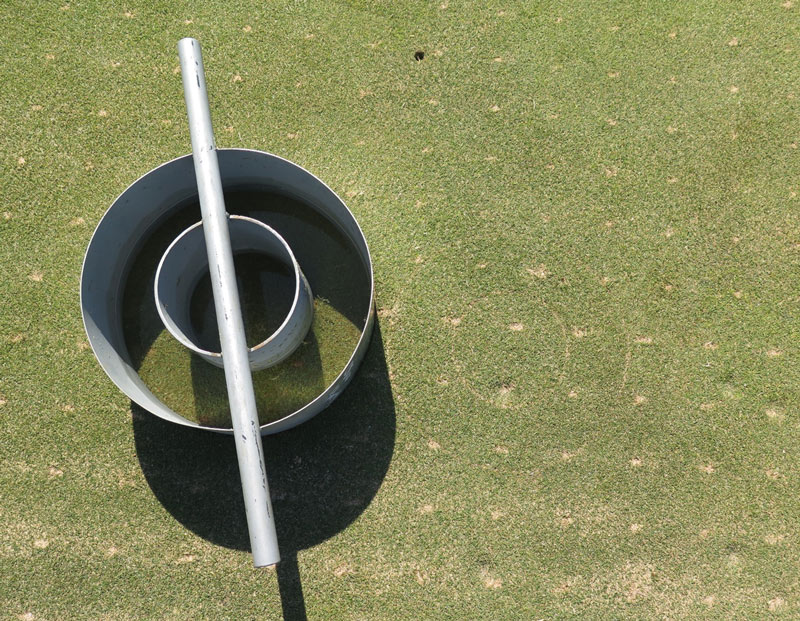
Photo by Naba Amgain
Editor’s note: The following research project is in progress and was featured in the Cutting Edge section of GCM. This research project was funded by a grant to GCSAA from the Environmental Institute for Golf.
New cultivation technologies for turfgrass are generally used to supplement traditional cultivation programs. Investigation of the effects of new equipment is necessary to validate manufacturer claims and update best management practices.
The goals of this project are: (1) to quantify duration and magnitude of changes to soil physical properties before and after single or multiple applications of the DryJect, AIR2G2 machines and conventional cultural methods; and (2) to evaluate turf performance and soil physical properties using annual programs that combine DryJect and AIR2G2 alone or with conventional cultivation methods.
Experiment 1 tests the longevity of individual applications of hollow-tine core aeration, DryJect or AIR2G2 on various soil physical measurements. Experiment 2 tests the effects of eight cultivation programs that include combinations of the practices listed above on seasonal soil physical properties and plant health. In experiment 3, on-site assessments were made of local golf courses using the cultivation practices listed above in order to fine-tune the methods to be used in experiments 1 and 2.
Experiments 1 and 2 were initiated in October 2016 on a Penncross creeping bentgrass green at the Oklahoma Agricultural Experiment Station and Turfgrass Research Center in Stillwater, Okla. Experiment 3, which began in March 2017, has resulted in assessments of soil physical properties of six golf courses in central Oklahoma.
Measurements were made at 0, 3, 7, 14 and 28 days after implementation of one of the cultivation methods. Data will continue to be collected at each of the designed experiments and across on-site locations.
— Charles Fontanier, Ph.D., and Naba Amgain, Oklahoma State University, Stillwater, Okla.
Teresa Carson is GCM’s science editor.